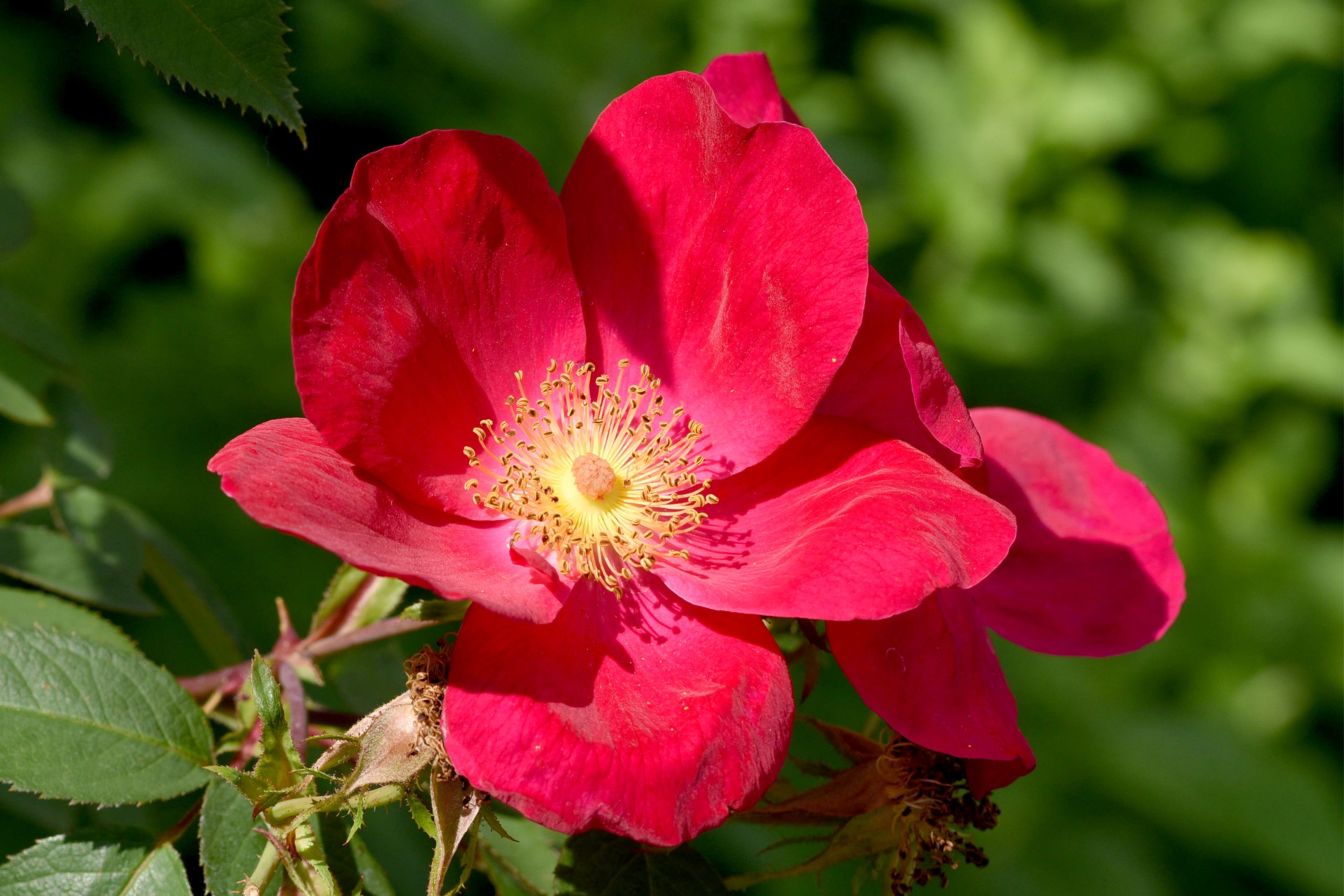French rose
(Rosa gallica)

Description
Rosa gallica, also known as the Gallic rose or French rose, is a species of rose that is native to central and southern Europe, northwest Africa, and the Middle East. This beautiful and fragrant rose has been cultivated for centuries and has played a significant role in both cultural and religious traditions. In this article, we will delve into the world of Rosa gallica, exploring its history, physical characteristics, growing requirements, and various uses. History Rosa gallica has a long and rich history that dates back to ancient times. The ancient Greeks and Romans both revered the Gallic rose, using it for a variety of purposes, including perfumes, medicinal remedies, and ornamental decorations. During the Middle Ages, the Gallic rose became an important symbol in Christianity, representing the Virgin Mary and the blood of Christ. It was used to adorn altars and churches and was a common subject in religious art. In the 16th and 17th centuries, Rosa gallica became a popular garden plant in Europe, with many cultivars developed for their fragrance and beauty. Physical Characteristics Rosa gallica is a deciduous shrub that can reach a height of 1.5 meters (5 feet) and a width of 1 meter (3 feet). It has a dense, bushy growth habit with thorny stems and dark green, serrated leaves. The flowers of Rosa gallica are its most distinctive feature, and they are typically a deep shade of pink or red. They have a cup-like shape with numerous petals that are arranged in a spiral pattern. The flowers bloom in late spring to early summer and are highly fragrant, with a sweet and spicy scent. Rosa gallica produces small, oval-shaped fruits called hips that are bright red and contain numerous seeds. The hips are edible and are often used to make jams, jellies, and teas. Growing Requirements Rosa gallica is a hardy plant that is relatively easy to grow, making it a popular choice for home gardens. It prefers full sun and well-draining soil, but it can tolerate partial shade and a variety of soil types. To plant Rosa gallica, dig a hole that is twice the size of the root ball and fill it with a mixture of compost and soil. Plant the rose at the same depth as it was in its original container, and water it thoroughly. Water Rosa gallica deeply once a week, and fertilize it in the spring with a balanced fertilizer. Prune the plant in the late winter or early spring, removing any dead or damaged branches and shaping it to the desired size. Uses Rosa gallica has many uses, both practical and ornamental. Here are a few of the most common: Fragrance: Rosa gallica is highly valued for its sweet and spicy scent, which is often used in perfumes and other fragrances. Medicinal remedies: Rosa gallica has been used for centuries in traditional medicine to treat a variety of ailments, including diarrhea, fever, and inflammation. Ornamental decoration: Rosa gallica's beautiful and fragrant flowers make it a popular choice for cut flower arrangements, wedding bouquets, and other ornamental decorations. Culinary purposes: Rosa gallica hips are edible and are often used to make jams, jellies, and teas. Conclusion Rosa gallica is a beautiful and fragrant rose with a rich history and many uses. Whether you grow it for its beauty, fragrance, or medicinal properties, this plant is sure to bring joy and beauty to your garden and your life.
Taxonomic tree:







